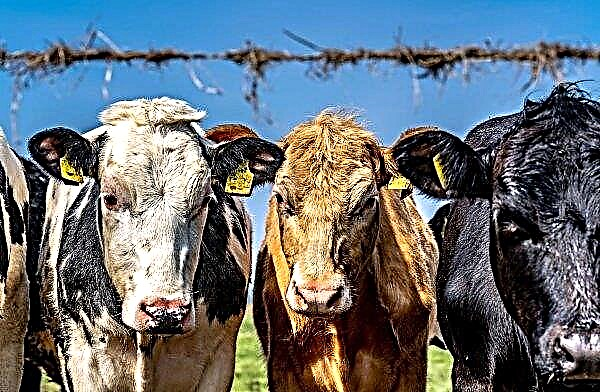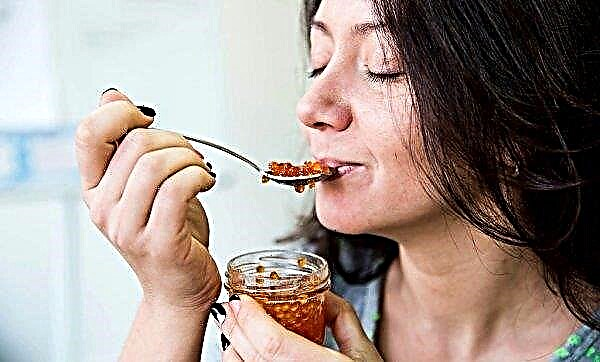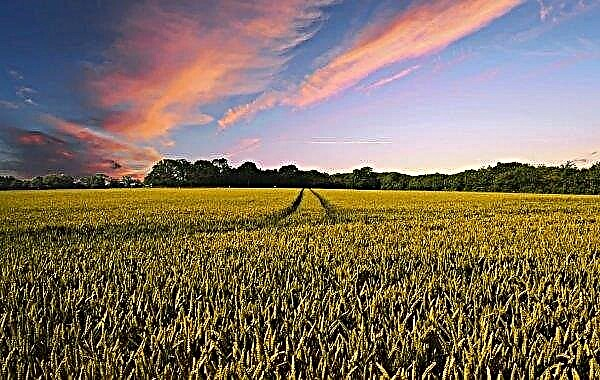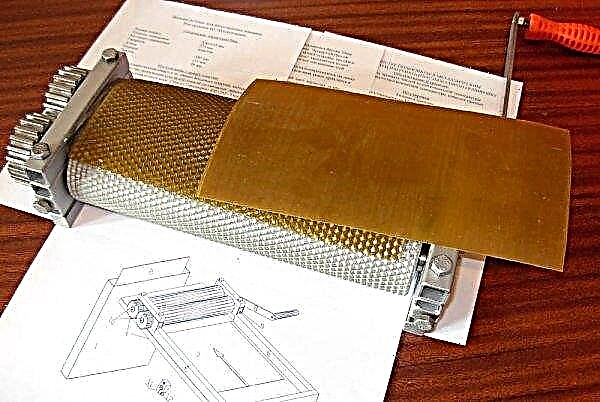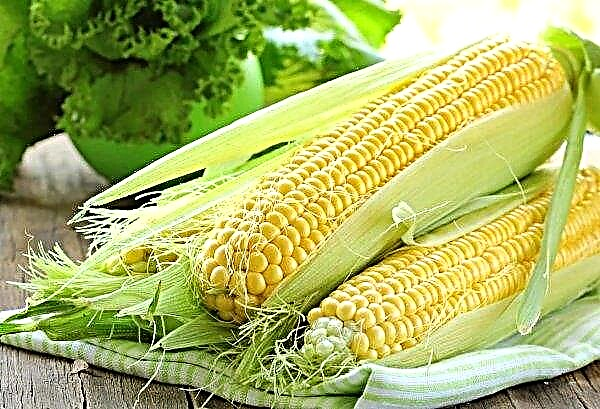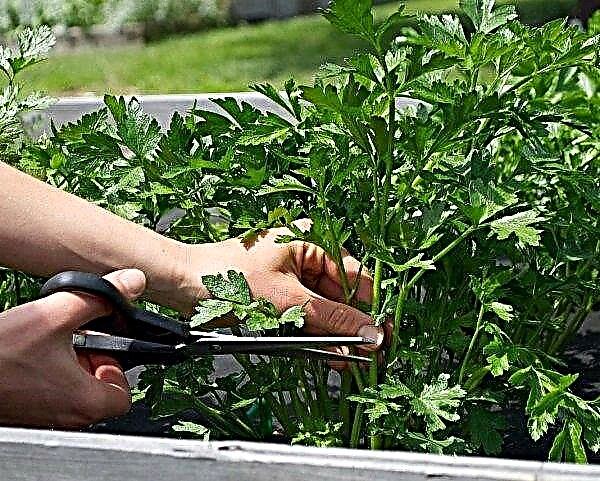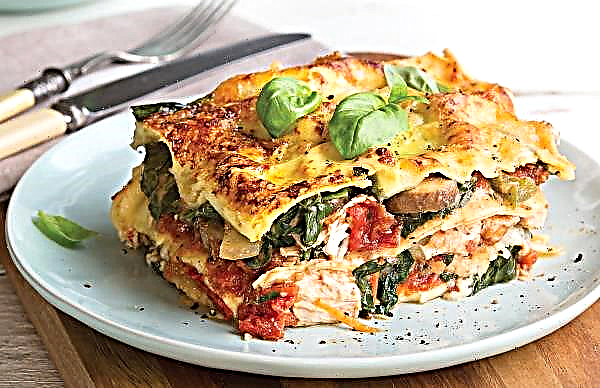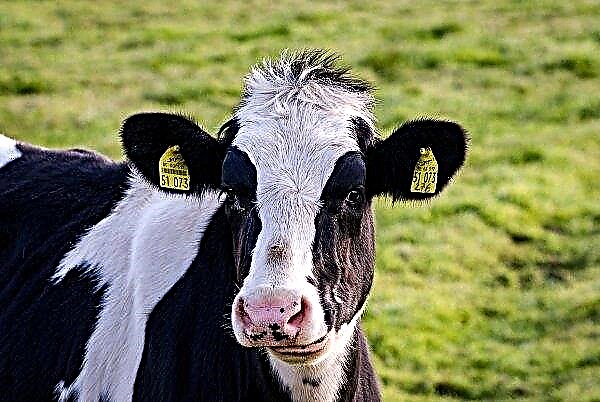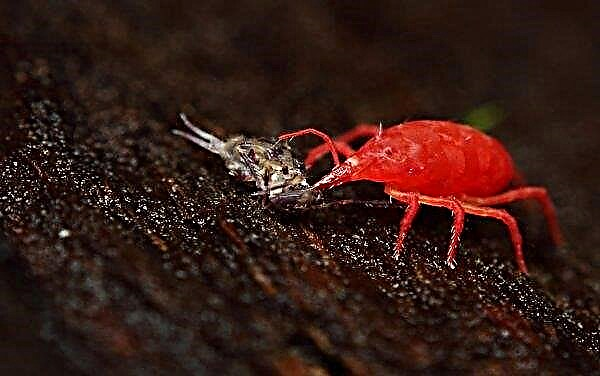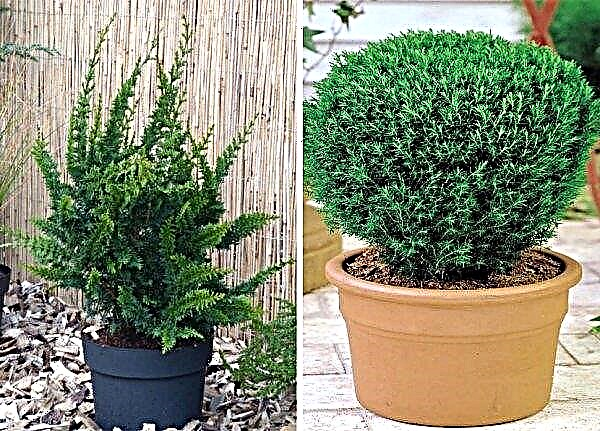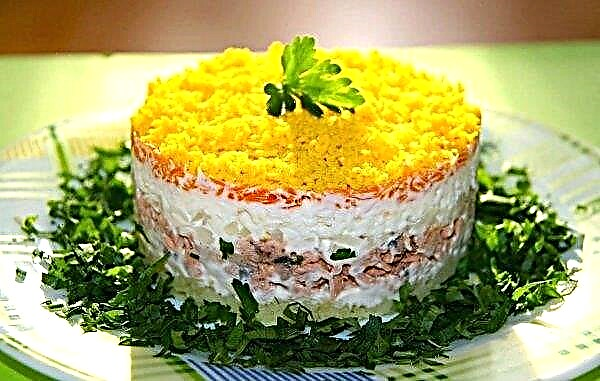Cedar is a vivid representative of conifers. Trees are considered centenarians, as their lifespan is at least 400 years. Most plant growers are planting adult seedlings. And not many people know how to properly grow this culture from a nut.
Is it possible to grow cedar from pine nuts
If you decide to grow cedar, then you can get full sprouts of conifer on your own, from nuts. Despite the fact that this business is very difficult (it is difficult to find high-quality planting material in the market), even inexperienced gardeners will be able to complete the task. Try to carefully monitor the implementation of actions so as not to make mistakes. Otherwise, the germination of planting material will significantly decrease.
Did you know? Tsar Peter I ordered the use of cedar wood to decorate the interior of ships, despite the fact that a cedar log cost 1 ruble, and pine - 6-7 cents.
Selection of planting material
In order to grow beautiful and healthy trees, it is necessary to approach the choice of planting material with responsibility. Buying it on the market is not recommended. This is due to the fact that pine nuts can retain germination for only 12 months. In the second year, it decreases and is completely lost by the age of three. If the seeds were stored in the correct conditions (temperature, humidity, lighting), then the process of deterioration of their quality slows down. If you use "home" kernels that have long been in the basement or box, then you risk not getting seedlings at all. Collect nuts yourself for reliability. You need to do this in the coniferous forests. The optimal time for collecting planting material is October or November. Some gardeners collect cones and seeds "from the ground." But it’s better not to. Instances that have been on the soil surface for a long time may be affected by fungi, mold, or rodents. Therefore, the quality of planting material is reduced. Try to pick cones from the tree yourself. Since the plants are quite tall, use long sticks.
Collect nuts yourself for reliability. You need to do this in the coniferous forests. The optimal time for collecting planting material is October or November. Some gardeners collect cones and seeds "from the ground." But it’s better not to. Instances that have been on the soil surface for a long time may be affected by fungi, mold, or rodents. Therefore, the quality of planting material is reduced. Try to pick cones from the tree yourself. Since the plants are quite tall, use long sticks.
When collecting nut raw materials, you need to pay attention to the following parameters:
- lack of an unpleasant smell;
- optimal diameter - 5 mm;
- without signs of mold and disease (plaque, stains, etc.);
- the presence of an internal core. Nuts should not be empty.
Preparing a nut for germination
There is an agricultural technique that is used in the preparation of nuts for germination. This procedure is called stratification. To germinate the seeds, follow the instructions.
- Soak the nuts in hot water for 3 days, changing the water daily.
- After - soak for 2 hours in a solution of potassium permanganate (1 tsp. To 5 l of water). This will quickly destroy all kinds of bacteria.
- Combine nuts with oven-baked sand (when cool), sawdust and chopped peat.
- Pour the mixture into a bag of natural fabric, which is placed in a wooden box with holes. Clean air must be inside.
- Put the box on the bottom shelf of the refrigerator to temper the planting material. The optimum temperature is from + 4 ° C to + 6 ° C.
A similar process is called cold stratification, which will help seeds germinate faster. With an interval of 10-12 days, remove bags from boxes and ventilate for 2-3 hours. Also make sure that the nuts are not moldy and rot. If necessary, change the substrate.
Important! It is allowed to lower the temperature to -4 ° C, but not longer than for 2-3 days. Otherwise, the seed will lose germination.
The technology of rapid stratification is as follows:
- Put pine nuts in warm water for 8 days. At intervals of 2 days, change the fluid so that pathogens do not develop in it.
- Dig the seeds into a mixture of peat and sand (the components are taken in equal proportions).
- Keep containers at room temperature to accelerate the emergence of seedlings, for 30 days.
- When the seeds hatch, place the seedlings in the refrigerator or immediately transplant them into a container with soil. Keep small sprouts should be at a temperature of 0 ° C until transplantation into open ground.
Video: Pine nut stratification
Ground and conditions for germination
When growing cedar at home, you need to pay special attention to the composition of the soil in which you will germinate the seeds. To do this, mix in equal proportions river sand, peat and gravel. Previously, the components for the soil must be calcined in the oven at a temperature of + 200 ° C for 25 minutes.
Thanks to this procedure, it is possible to disinfect the soil and prevent the appearance of diseases. When all the procedures have been completed, cool the soil and fill it with containers in which it will be planted.
How to plant pine nuts
There are several methods for planting pine nuts at home. Gardeners can plant seeds in pots in which seedlings will be cultivated for planting in open ground. It is also possible to plant nuts immediately in open ground so as not to transplant. This will prevent a violation of the integrity of the root system and increase the life span of the tree.
At home in a pot
When the sprouts after germination of seeds reach a height of 3 cm, you can begin to transplant into pots. Seedlings must be in containers for one year. The basic rule that the gardener must follow is to carefully handle the planting material so as not to damage the root system. At the bottom of the pot pour a 5-centimeter layer of drainage. You can buy it in a specialty store or use ordinary empty pine cones (shredded). After the seeds have sprouted, the containers are installed so that the plants are evenly lit, and not stretched to one side. In a year they will grow by 7–15 cm. They can be planted in a permanent place in the soil only after they reach a height of about 30 cm. A mixture of earth, sand and coniferous sawdust is used as a substrate. They need to fill the pots by 2/3. Plant cedar sprouts inside. If you use large containers, the distance between planted plants should be 20 cm. 30 days after transplanting, it is necessary to take the pots out into the open air to harden the sprouts. You need to do this every day. In the open air, plants should be no more than 5 hours. You need to place them under a canopy or tree to avoid direct sunlight.
After the seeds have sprouted, the containers are installed so that the plants are evenly lit, and not stretched to one side. In a year they will grow by 7–15 cm. They can be planted in a permanent place in the soil only after they reach a height of about 30 cm. A mixture of earth, sand and coniferous sawdust is used as a substrate. They need to fill the pots by 2/3. Plant cedar sprouts inside. If you use large containers, the distance between planted plants should be 20 cm. 30 days after transplanting, it is necessary to take the pots out into the open air to harden the sprouts. You need to do this every day. In the open air, plants should be no more than 5 hours. You need to place them under a canopy or tree to avoid direct sunlight.
Important! The use of natural materials (bark, needles, sawdust) in the organization of a seat has a positive effect on the development of cedar, as the growing conditions are close to natural.
In open ground
Seeds that have passed stratification are planted in open ground in spring. It is best to carry out this procedure in late April to establish a constant warm weather. On 1 m², only 300 g of seeds are placed. You need to deepen the seeds by 5 cm. The area must be covered with plastic wrap to protect against pests and diseases. Take cover every day to normalize the level of humidity and temperature inside. When the seedlings reach a height of 5-7 cm, you need to transplant them, sorting by size. Each plant should be placed on a site measuring 20 × 10 cm.
You need to deepen the seeds by 5 cm. The area must be covered with plastic wrap to protect against pests and diseases. Take cover every day to normalize the level of humidity and temperature inside. When the seedlings reach a height of 5-7 cm, you need to transplant them, sorting by size. Each plant should be placed on a site measuring 20 × 10 cm.
Growing and caring for young plants
Caring for the "young" is quite simple. First you need to adjust the irrigation rate to prevent overmoistening of the soil or drying out of the soil. Irrigate the land at least 1 time per week. You can also spray the crown with a spray gun to make it brighter.
Did you know? Cedar kernel oil is used in the manufacture of high-quality optics.
Young plants should be fed twice a year. In spring, potassium nitrate (60 g per copy) is used, and in the fall, superphosphate (50 g per 1 cedar) is used. You will also need to regularly loosen the topsoil and remove weeds to avoid the development of diseases and pests.
Transplanting a seedling to a permanent place
Transplanting planting material to a permanent place is necessary after 2 years, when the seedlings are strong and will have a developed root system. It is best to place the plants in a permanent place in spring.
The step-by-step transplant procedure looks like this:
- Dig holes with dimensions of 70 × 70 × 70 cm. The distance between them should be 2 m.
- Drainage is placed on the bottom (pine cones or expanded clay).
- Sprinkle the bottom layer with a nutrient mixture of sand, soil and peat (in a ratio of 1: 2: 1).
- Inside is placed a seedling dug with an earthen lump.
- Sprinkle it with soil and pour 4 liters of water.
- Mulch the near-trunk circle with spruce or humus. The mulch layer should be 25 cm.
Now you know how to properly grow cedar at home without much effort. It’s enough to responsibly approach the choice of seed and to sprout it properly, after which the seed germination is significantly increased, and after a few years you will be able to see beautiful young trees in your garden.

